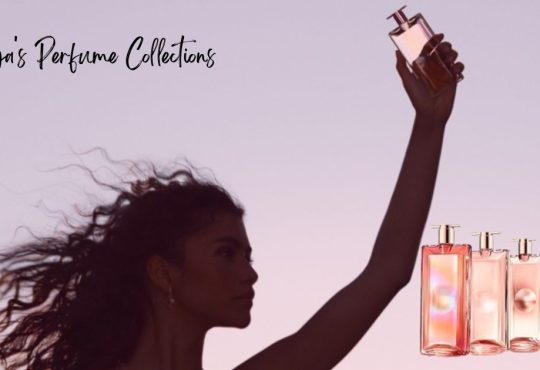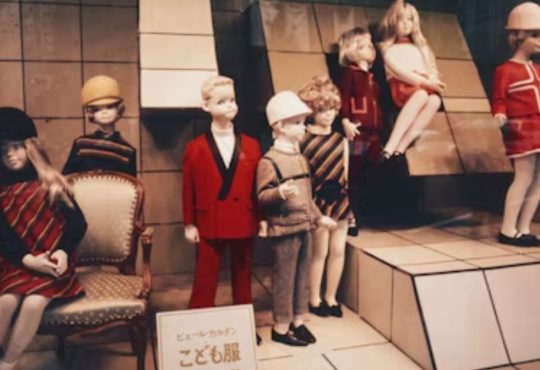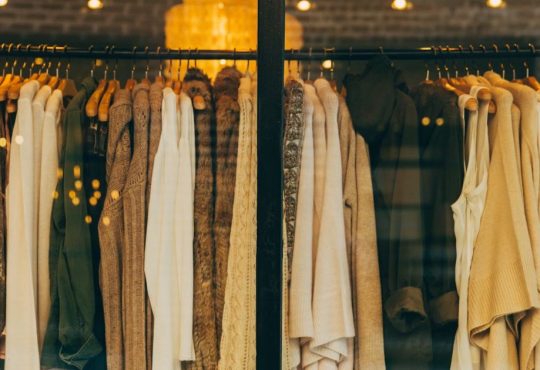Few footwear styles capture the elegance of high heels quite like these iconic staples, especially when it comes to dressing up for formal events or special occasions. For centuries, high heels have symbolized sophistication, poise, and confidence, evolving from their practical origins into timeless fashion statements that instantly elevate any look with grace and flair.
A Brief History of High Heels
High heels trace their origins to the 16th Century when men and women wore them primarily for practical purposes, particularly for better grip and stability while riding horses. As fashion progressed, so did the role of high heels. By the 17th and 18th centuries, they had become a mark of the upper class, with women embracing them to appear taller and to showcase their social status. By the 20th Century, high heels had fully transitioned into a symbol of femininity, worn predominantly by women during formal occasions, parties, and events that called for a refined, sophisticated look.
Elegance of High Heels: Why This Timeless Style Still Reigns
High heels are synonymous with sophistication. Whether attending a gala, wedding, or corporate event, slipping into stylish heels can instantly elevate your look. The height they provide adds an element of grace to the wearer’s posture, making them appear taller, more poised, and more confident. For example, a classic pair of stiletto heels can transform an ordinary dress into an extraordinary ensemble, strikingly contrasting the delicacy of the heel with the boldness of the outfit.
The choice of material, color, and design further contributes to the versatility of high heels. From the understated elegance of black patent leather to the opulence of metallic and jeweled embellishments, heels can match any dress code. High heels are particularly effective in creating a streamlined silhouette, elongating the legs, and giving the wearer a sleek, refined appearance.
Why High Heels Are Still Relevant
Despite evolving fashion trends, high heels continue to be a popular choice for many women seeking luxury for formal occasions. A few core reasons help explain their lasting popularity:
- Versatility: High heels are available in a variety of styles, ranging from pumps and stilettos to wedges and kitten heels. This makes them suitable for various formal events, such as a formal dinner, a cocktail party, or a red-carpet affair. Heels can complement any outfit, from evening gowns to tailored pantsuits.
- Confidence Boost: Wearing high heels can give a person an instant sense of empowerment. The extra height and posture adjustment they bring can significantly boost self-esteem, helping wearers exude confidence and charisma at any event.
- Aesthetic Appeal: The visual impact of high heels is undeniable. Their sleek, slender design enhances an outfit’s overall aesthetic, adding a polished and refined touch. Many designers continue to experiment with new trends in heel shapes, materials, and embellishments, making them more fashionable and desirable than ever.
- A Tradition of Refinement: Wearing high heels to formal events is a long-standing practice across various cultures. They represent the occasion’s significance, marking it as a moment worthy of celebration. Putting on heels adds a sense of ritual and sophistication, elevating the event’s overall elegance and formality.
The Challenges and Considerations
While high heels are undeniably stylish, they can be challenging to wear for extended periods. Many people are concerned about the discomfort of wearing heels for extended periods, especially at events that require prolonged standing or dancing. Foot care and choosing the right pair of heels are essential to maintaining comfort without sacrificing style. Insoles, padded footbeds, and shoes with more supportive features can help alleviate some of the strain.
Moreover, in recent years, there has been a growing awareness of the need for more inclusive and comfortable footwear options, resulting in the emergence of stylish yet comfortable alternatives to traditional high heels. For those who want to look chic without compromising comfort, shoes with a slight heel, block heels, or stylish flats are becoming popular for formal events.
High Heels in Modern Fashion
High heels dominate runway shows and everyday attire in today’s fashion landscape. The rise of fashion icons and celebrities sporting glamorous heels at red carpet events has cemented their importance in the fashion world. Designers like Christian Louboutin, Jimmy Choo, and Manolo Blahnik have become synonymous with high-end heels, offering exclusive collections that cater to the discerning fashionista.
Additionally, more recent trends have introduced hybrid designs, such as the combination of athletic shoes and high heels or the comeback of platform heels, allowing for a modern take on a classic style.
The Evolution of High Heels in Fashion
High heels have undergone significant evolution over the years. From their humble beginnings in the 16th Century to becoming a staple of modern fashion, their design and purpose have evolved:
- 17th and 18th Centuries (Baroque and Rococo Eras): During these periods, high heels became more about style than functionality. They were adorned with intricate decorations, serving as a clear sign of wealth and high social status. Men in the court of Louis XIV wore heels to appear taller and more powerful, and women followed suit.
- 19th Century (Victorian Era): High heels became closely tied to women’s fashion during this period. Crafted from luxurious materials such as satin and silk, they often showcased pointed toes and a more delicate silhouette. The design emphasized elegance and refined femininity, highlighting grace over practicality.
- Early 20th Century (1920s–1950s): With the rise of iconic fashion figures like Coco Chanel and Christian Dior, heels became a symbol of the modern woman. The stiletto heel, introduced by designers in the mid-20th Century, was revolutionary, making a sharp, sleek statement that remained for decades.
- 1970s–Present: High heels continued to evolve, influenced by social changes and technological advances. Platforms, wedges, block heels, and, more recently, sustainable materials have emerged, ensuring heels remain stylish and functional.
Types of High Heels
Not all high heels are the same. They come in various styles, each offering something different in terms of aesthetics and functionality:
- Stiletto Heels represent the pinnacle of high fashion. They feature a tall, slender heel ranging from 3 to 5 inches or higher. Stilettos are celebrated for their ability to lengthen the legs and deliver a sleek, sophisticated appearance. While undeniably stylish, they can be less forgiving in terms of comfort and may pose a challenge when walking gracefully.
- Pumps: A timeless staple, pumps are closed-toe heels with moderate heights, typically ranging from 2 to 4 inches in height. Known for their versatility, they seamlessly transition from the office to formal occasions. With their classic silhouettes and polished appeal, pumps remain a reliable choice for professional wear and elegant evenings.
- Wedges: Wedge heels offer a more balanced weight distribution than stilettos, making them a more comfortable choice for extended wear. They provide added height without sacrificing stability, making them a favorite for summer occasions and outdoor events.
- Kitten Heels: These low, subtle heels, typically 1–2 inches high, offer an elegant look without the discomfort associated with taller heels. They are ideal for those who want a more conservative style but still wish to add a bit of height and sophistication.
- Block Heels: Featuring a square or rectangular base, block heels offer enhanced support and stability compared to narrower heels, such as stilettos. They’re ideal for giving a contemporary edge to a formal outfit while ensuring comfort.
- Platforms: These heels feature a thick sole that elevates the entire foot, making the heel height more manageable and comfortable to wear. Platform shoes were particularly popular in the 70s and have made a resurgence in recent years.
High Heels and Cultural Impact
High heels are more than just a fashion accessory—they have had a profound cultural impact, symbolizing everything from power to femininity. For example:
- Empowerment and Femininity: High heels have long been associated with women’s empowerment. In many cultures, they are viewed as a means for women to assert control over their appearance and convey confidence, power, and sensuality. For some women, wearing high heels is a form of self-expression, while for others, it may be a way to feel more polished and put-together.
- Media and Pop Culture: Celebrities and public figures often influence the popularity of high heels. Iconic moments in movies, such as the famous “Carrie Bradshaw” stiletto moments in Sex and the City, have cemented the high heel’s status as a symbol of glamour and sophistication. High heels have also been a central feature of red-carpet fashion and runway shows, where designers showcase their latest creations.
- Gender and High Heels: While high heels have traditionally been associated with women’s fashion, a growing trend toward more gender-neutral fashion has emerged in recent years. Male celebrities and designers have experimented with high heels, challenging traditional notions of femininity. This shift reflects broader changes in fashion where conventional boundaries of gender expression are becoming more fluid.
Health Considerations and Comfort
Though high heels can add elegance and height, they also come with specific health concerns that have garnered increasing attention in recent years:
- Foot Health: Wearing high heels for prolonged periods can cause stress to the feet, leading to conditions such as bunions, hammertoes, and plantar fasciitis. The unnatural arch and pressure on the toes can also lead to long-term damage.
- Posture and Back Pain: High heels can alter the natural alignment of the spine, leading to back pain, muscle strain, and poor posture. Over time, excessive use can lead to long-term discomfort in the lower back and hips.
- Balance and Risk of Injury: The higher the heel, the more unstable the shoe becomes. Wearing stilettos or other high heels can increase the risk of falls and ankle sprains. The risk is even greater in crowded environments, uneven terrain, or during extended walking.
- Alternatives and Solutions: To mitigate the discomfort, some women opt for cushioned insoles, heel grips, or gel pads, which provide additional support and comfort. Many brands have begun designing heels with orthopedic features, combining fashion with function. There is also a growing trend of comfortable, stylish alternatives to traditional high heels, such as sneakers with elevated soles or block heels designed for improved stability.
Sustainability and Ethical Fashion
The fashion industry has recently faced increasing pressure to be more sustainable. The high-heel market is no exception:
- Eco-Friendly Materials: Some designers are exploring the use of eco-friendly materials, such as vegan leather, sustainable fabrics, and recycled materials, to create more sustainable high heels. These alternatives cater to consumers who are mindful of their environmental impact.
- Slow Fashion Movement: As the “fast fashion” trend wanes, many fashion enthusiasts are shifting toward “slow fashion,” which promotes buying fewer, more timeless, and durable pieces. High-quality, classic heels made to last fall into this category, as they are considered more sustainable than cheap, mass-produced alternatives.
The Timeless Appeal and Future of High Heels
High heels remain a timeless emblem of grace, style, and feminine allure. Their evolution from practical footwear to a fashion statement reflects changes in style and cultural attitudes toward gender, power, and self-expression. Despite their challenges in terms of comfort and health, high heels remain a popular choice for formal events and dressy occasions, offering a distinctive way to enhance one’s outfit and confidence. With innovations in design and a growing emphasis on sustainability, the future of high heels looks poised to remain both stylish and more comfortable than ever before.





